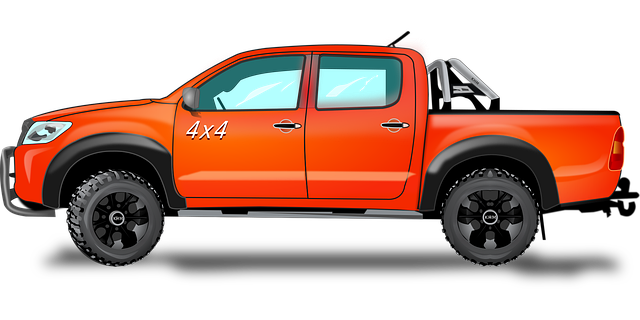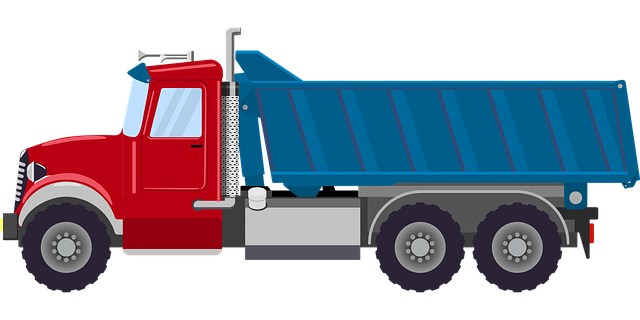Truck skid plates are essential for off-road vehicles, protecting against damage by deflecting rocks, roots, and debris. They enhance vehicle durability, improve traction, and reduce the need for costly RGV-4×4-repair. Different materials and designs cater to varied needs, with proper installation and regular maintenance crucial for optimal performance. Regular inspection is key to prevent wear and corrosion, ensuring off-road enthusiasts maximize their skid plates' effectiveness.
“Unleash the potential of your truck with an essential accessory: skid plates. This guide explores the transformative power of these robust components, especially highlighting their role in RGV-4×4-repair.
We’ll delve into the science behind skid plates, explaining their crucial function in protecting your vehicle during off-road adventures and rugged terrain navigation. Understanding their benefits is just the start—we’ll also cover different types, installation tips, and maintenance to ensure longevity.
For RGV-4×4 enthusiasts, this article offers a comprehensive resource for enhancing your vehicle’s capabilities through strategic skid plate integration.”
- Understanding Truck Skid Plates: Their Role and Benefits
- RGV-4×4-Repair: When and Why You Need a Skid Plate
- Types of Skid Plates: Material, Design, and Compatibility
- Installation and Maintenance Tips for Longevity
Understanding Truck Skid Plates: Their Role and Benefits

Truck skid plates are an essential component for off-road vehicles, particularly in rugged terrain where traction and stability are paramount. These sturdy metal plates are designed to protect the underbody of a truck from skidding, which can cause significant damage during extreme driving conditions. By adding a robust skid plate, drivers can navigate through mud, sand, or rocks with enhanced confidence, knowing their vehicle has an extra layer of defense against obstacles that could lead to costly repairs.
The primary role of a skid plate is to prevent the underbody components from direct contact with rough surfaces, reducing the risk of scrapes, dents, and more severe damage. This simple yet effective modification enhances the overall durability of the truck, making it ideal for those who frequently engage in RGV-4×4-repair or off-road adventures. Skid plates not only safeguard the vehicle’s vulnerable parts but also contribute to better performance by minimizing friction, allowing tires to gain and maintain traction more efficiently.
RGV-4×4-Repair: When and Why You Need a Skid Plate

In the world of RGV-4×4-repair, understanding the importance of skid plates is paramount for off-road enthusiasts and vehicle owners alike. A skid plate, essentially a sturdy metal or plastic shield attached to the underside of a truck, serves as a crucial defense against environmental hazards like rocks, roots, and debris that can damage critical components during rugged terrain navigation.
When it comes to RGV-4×4-repair, recognizing the signs of wear and tear on your skid plate is essential. Over time, these plates can sustain significant damage, compromising their effectiveness. Regular inspection for cracks, dents, or severe rusting should prompt immediate action. Replacing a damaged skid plate is not just about aesthetics; it’s about ensuring the longevity and safety of your vehicle. A robust skid plate acts as a shield, protecting the undercarriage from impacts that could lead to costly repairs down the line.
Types of Skid Plates: Material, Design, and Compatibility

Skid plates, an essential accessory for 4×4 vehicles, come in various types designed to serve different purposes. When considering a skid plate for your RGV-4×4-repair needs, material is a key factor. Typically made of steel or aluminium, each has its advantages. Steel offers superior strength and durability, ideal for heavy-duty off-roading, while aluminium is lighter, making it a preferred choice for those focused on improving fuel efficiency without compromising too much on protection.
Design plays another crucial role in compatibility. Some skid plates are designed to cover the entire underbody, offering maximum protection against rocks, roots, and other obstacles. Others have specific cut-outs for improved cooling or access to essential components like exhaust pipes. Ensuring the design aligns with your vehicle’s architecture and doesn’t interfere with suspension or drivetrain components is paramount. Compatibility checks are vital to prevent any potential damage during intense off-road adventures.
Installation and Maintenance Tips for Longevity

Proper installation and regular maintenance are key to ensuring your truck’s skid plates serve their purpose for years to come. When installing, make sure all bolts are tightened securely according to the manufacturer’s specifications. This prevents loose components that could lead to premature wear or failure during rough terrain navigation, a common RGV-4×4-repair concern.
For maintenance, regularly inspect the skid plates for signs of damage, corrosion, or wear. Clean them thoroughly to remove dirt and debris, as build-up can affect their effectiveness. Consider applying a protective coating to prevent rust, especially in corrosive environments. Timely replacement of worn-out parts is essential for optimal performance, so stay vigilant during routine RGV-4×4-repair checks to keep your skid plates in top condition.
Truck skid plates are essential accessories for off-road enthusiasts and commercial vehicle owners alike. As demonstrated, understanding their purpose and benefits, choosing the right type for your rig (such as the RGV-4×4-repair), and proper installation and maintenance are key to maximizing their longevity and performance. By investing in a high-quality skid plate, you’re not just enhancing your truck’s durability; you’re also opening up new possibilities for exploring rugged terrains with confidence.



